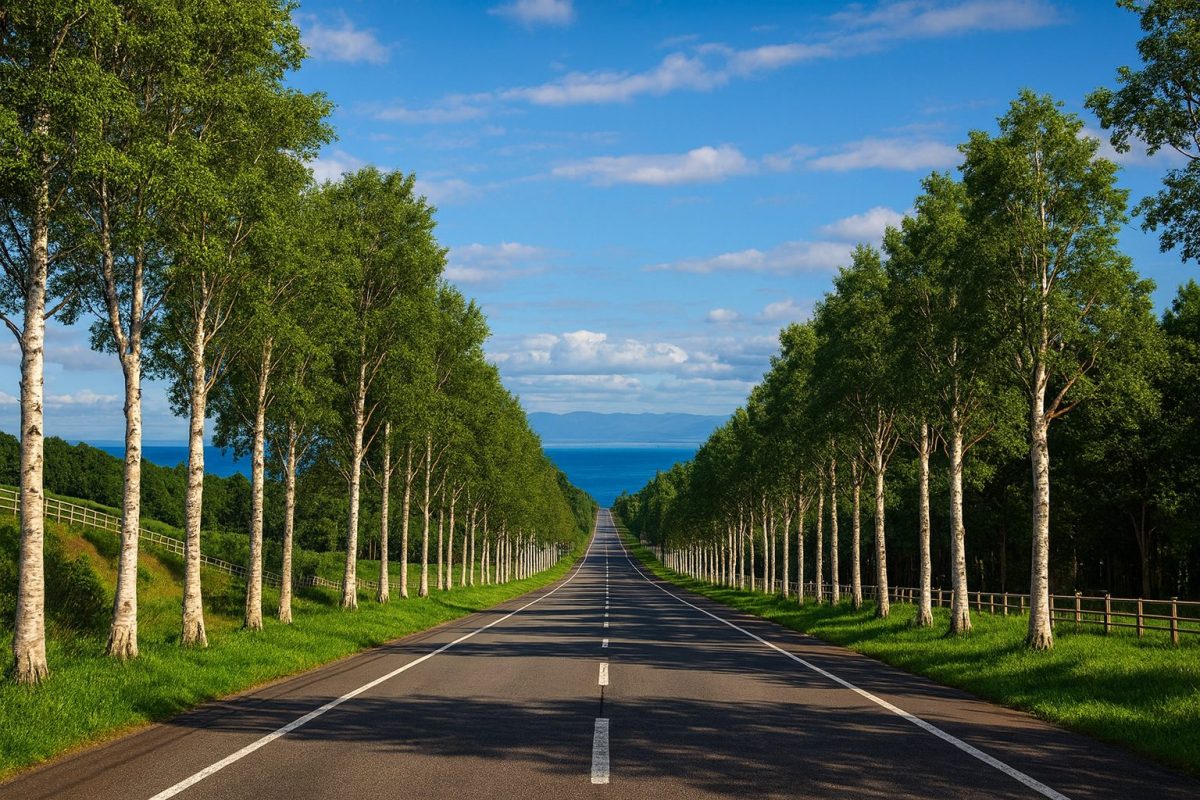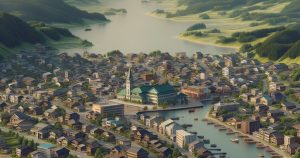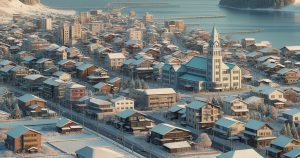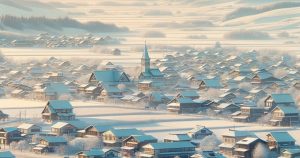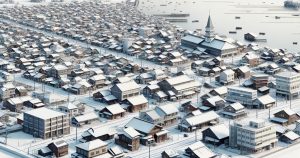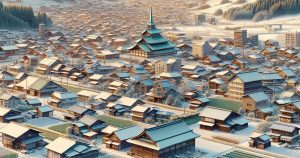| population | 14,276 peoples |
|---|---|
| area | 956.08 km² |
| population density | 14.9 peoples/km² |
Yakumo Town, located in the northern part of the Oshima Peninsula in Hokkaido, is the only municipality in Japan that faces both the Sea of Japan and the Pacific Ocean. The town was established in 2005 when the former Yakumo Town and Kumaishi Town merged, creating a region blessed with diverse natural environments and rich cultural traditions. The name “Yakumo” was given by Tokugawa Yoshikatsu, the 17th head of the Owari Tokugawa family, inspired by Japan’s oldest waka poem about “eight clouds” symbolizing peace and prosperity.
The landscapes of Yakumo differ greatly between east and west. The eastern area, facing Uchiura Bay, has fertile plains and hills suitable for farming and dairy, while the western Kumaishi area, facing the Sea of Japan, is characterized by steep mountains and rugged coastlines, where fishing and maritime culture thrive. This unique geography, together with the legacy of the Ainu culture and the pioneering efforts of settlers, has shaped Yakumo’s distinct identity. Today, its festivals, dialect, food culture, and traditions continue to fascinate visitors, making Yakumo a town where nature, history, and people’s lives blend harmoniously.
Culture & Traditions
Yakumo’s culture has been strongly influenced by fishing, farming, and Ainu traditions. Along the coast, a rich seafood-based food culture has flourished, with specialties such as scallops from Uchiura Bay and abalone from the Sea of Japan widely recognized across Japan. The town is also known as the “birthplace of Hokkaido dairy farming,” and dairy products remain a symbol of Yakumo today.
Local speech incorporates Hokkaido dialect, with traces of Ainu language and customs still preserved, creating a unique cultural atmosphere. Festivals are another cornerstone of Yakumo’s traditions. Seasonal events such as the “Yakumo Samuibe-ya Festival” in winter, the “Ochibe Tsutsuji Azalea Festival” in spring, the lively “Yakumo Float Parade” and “Kumaishi Abalone Festival” in summer, and the “Yakumo Salmon Festival” in autumn bring the community together and attract many tourists.
These elements—nature, dialect, and festivals—make Yakumo not just a sightseeing destination, but a living cultural town deeply rooted in the daily lives of its people.
Local Specialties
-
Scallops: Cultivated extensively in Uchiura Bay, Yakumo’s scallops are thick, sweet, and highly valued for sashimi and grilled dishes.
Uchiura Bay (Google Maps) - Abalone: The Kumaishi coast has established a full-scale aquaculture system, from seedling to adult shells. The abalone here is prized as one of the finest in Hokkaido.
-
Kitazato Yakumo Beef: Raised at Kitazato University’s Yakumo farm, this premium beef is produced using sustainable agriculture and has a rich flavor.
Kitazato Yakumo Farm (Google Maps) -
Wood-carved Bears: Yakumo is recognized as the birthplace of wood-carved bears in Japan. The town’s unique carving techniques, such as fine hair carving and “menbori” face carving, are valued as traditional crafts.
Yakumo Bear Woodcarving Museum (Google Maps) - Dairy Products: As the origin of dairy farming in Hokkaido, Yakumo offers fresh milk, cheese, and ice cream with a rich and creamy flavor.
Annual Events
- Yakumo Samuibe-ya Festival (February): A winter festival featuring snow sculptures and ice decorations, creating a magical winter scene.
-
Ochibe Park Azalea Festival (June): A celebration of blooming azaleas across the park, attracting nature lovers.
Ochibe Park (Google Maps) - Yakumo Float Parade (July): Gorgeous floats parade through the streets accompanied by traditional festival music.
- Kumaishi Abalone Festival (May): A seafood event in Kumaishi highlighting the region’s prized abalone and other fresh catches.
- Yakumo Salmon Festival (October): A lively celebration of salmon and autumn seafood, drawing large crowds of visitors.
Access
- By Air: From New Chitose Airport or Hakodate Airport, Yakumo is accessible by car or JR train. It takes about 2 hours by car from Hakodate Airport.
-
By Train: JR Hakodate Main Line serves Yakumo Station, the town’s main gateway. Approx. 90 minutes by express train from Hakodate and 3 hours from Sapporo.
JR Yakumo Station (Google Maps) - By Car: Exit at Yakumo IC on the Hokkaido Expressway. About 3.5 hours from Sapporo and 2 hours from Hakodate.
- By Bus: The “Highway Hakodate Line” express bus connects Sapporo and Hakodate, with stops in Yakumo.
Tourist Attractions
- Yakumo Folk Museum – Showcasing the town’s history and its unique woodcarving culture.
- Umemura Garden – A historic Japanese garden offering seasonal beauty and tranquility.
- Funkawan Panorama Park – A scenic park with a panoramic view of Uchiura Bay.
- Harvester Yakumo – A local landmark featuring restaurants and facilities offering dishes with local ingredients.
- Yakumo Onsen – A natural hot spring area surrounded by beautiful landscapes.
